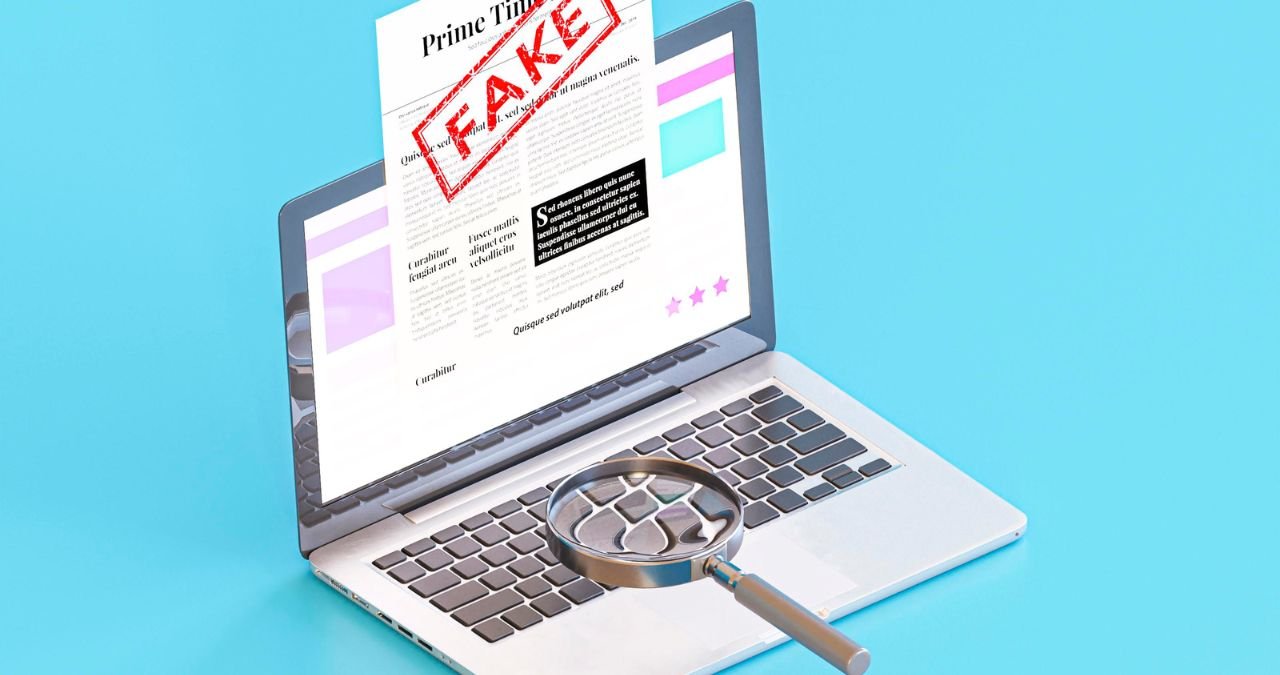Fake websites are like a painful bone that is stuck in the throats of website owners. As you take one down, another one is coming up with the purpose of defrauding people and robbing the real business owners of their profits.
These cunning people put up a website that looks so much like the original website just to deceive people that they are on the right website. If an unaware customer clicks on the website and puts his/her financial details, the customer is at risk of losing money, while the original website owner is at risk of a bad reputation.
Fortunately, it is possible to take down fake websites by going through some steps in order to protect the integrity of a business.
Table of Contents
Identifying Fake Websites
Recognizing common signs of fake websites is important so as not to fall victim and to be able to take them down. Fake websites can be recognized through:
Suspicious Domain Names
Fake websites often use domain names that imitate well-known brands or organizations but with subtle variations. Such as:
- Typosquatting
This deceptive practice involves creating domain names that closely resemble the names of well-known brands or websites but incorporate deliberate typographical errors or misspellings.
For example, “googgle.com” might be used to mimic the legitimate “google.com.” Typosquatting is a common strategy used to divert traffic to fake websites by exploiting users’ typing mistakes.
- Combosquatting
Combosquatting takes deception a step further by combining a legitimate brand name or website with additional words or terms. For instance, a fake website might use a domain like “facebook-freebies.com” to attract users looking for freebies related to Facebook.
This strategy capitalizes on users’ associations with a trusted brand while offering enticing, but often fraudulent content.
- Levelsquatting
In this sophisticated tactic, fake websites create subdomains that mimic legitimate web addresses. It is usually targeted at users with small screens, such as mobile phones that cannot show the whole URL. For instance, they might use “support.google.com plus the fake part” to imitate the real “support.google.com.”
Level squatting relies on the fact that many users trust subdomains within established websites, making them susceptible to phishing or fraudulent schemes.
Using Online Tools: Website Monitoring Software
Website monitoring software is a proactive way for business owners to protect their online presence and brand reputation. Here’s how it can be beneficial:
Real-time Alerts: Monitoring software can send real-time alerts if it detects any suspicious activity related to your brand. This includes instances where fake websites attempt to impersonate your company or use similar domain names.
Content Changes: By monitoring your legitimate website for unauthorized content changes, you can quickly identify and address any unauthorized alterations.
SSL Certificate Validation: Website monitoring tools can verify the SSL certificates of websites claiming to be associated with your business.
Downtime Detection: These tools can also alert you to any unexpected downtime on your website, which could be a sign of a cyberattack or other malicious activity.
Strategies to Take Down Fake Websites
Taking down a fake website requires a lot of work, and different steps must be taken to get it done. Most of the time, as you take one fake website down, another one is coming up; therefore, all hands must be on deck to get it done. Steps to take down a fake website include:
- Documenting Evidence
- Reporting to Relevant Authorities
- Contacting Domain Registrars
- Legal Actions
- Raising Awareness
- Automated fake website takedown
Documenting Evidence
If you want to take the website down on your own, the first step to take is to get evidence. You can get this done by:
- Capturing screenshots
- Recording website URLs
- Noting any suspicious content
- Saving email communications
This evidence is important for proper documentation against the website, and it can also help if you want to take legal action against the offender.
Reporting to Relevant Authorities
The next step to take against a fake website is to report the fake website to the appropriate authority. The authorities include:
- Local law enforcement
- Cybercrime units
- Consumer protection agencies
- Hosting providers
For example, if you want to report a fake website, here’s how you can reach out to these relevant authorities:
Local Law Enforcement
- Contact your local police department or law enforcement agency. You can usually find their contact information on their official website or in your local phone directory.
- When reporting, provide them with detailed information about the fake website. These are the evidence you have collected on your own, including its URL, any evidence of fraudulent activities, and any communication you’ve had with the website operators.
Cybercrime Units
- Many regions have specialized cybercrime units or task forces that focus on online criminal activities. Search for the nearest cybercrime unit or contact your national cybercrime agency.
- When reporting to cybercrime units, be thorough and provide as much evidence as possible. This may include screenshots of the fake website, email communications, or any suspicious files or links you’ve encountered.
- Cybercrime units are well-equipped to investigate online fraud, so they may request more technical details about the website or any digital evidence you can provide.
Consumer Protection Agencies
- Locate the consumer protection agency relevant to your jurisdiction. In the United States, for example, you can contact the Federal Trade Commission (FTC).
- When reporting to consumer protection agencies, you will send them the evidence you have been able to gather against the fake website, which can harm your business or customers
Hosting Providers
- Identify the hosting provider of the fake website. You can do this by performing a domain lookup or by examining the website’s “About Us” or “Contact” page.
- Contact the hosting provider through their support or abuse department. Most hosting providers have dedicated channels for reporting abuse.
In your report to hosting providers, explain the deceptive nature of the website and provide the URL. Hosting providers will take action if the website is doing something that is against the terms of service.
All the steps above can be taken to take down a fake website. But if you take one down and other ones are coming up, how do you do it then? Also what if you have other things like expanding your business to do? Then you won’t be able to do all these on your own. Therefore, you should leverage the service of professionals and technology.
Domain Monitoring Software
Domain monitoring software is like your online security guard, but for your brand and website. Its main job is to watch over the internet and make sure that no one is pretending to be you or using a similar name to trick people.
Here’s how it can help:
- Continuous Monitoring
These software solutions continuously scan the internet for domain names that resemble your brand, employ typosquatting, or exhibit other suspicious characteristics.
- Real-time Alerts
When the software detects a domain that matches your predefined criteria for suspicious activity, it sends real-time alerts. This allows you to take immediate action, report the fake website to relevant authorities, or address the issue without delay.
- Reports and Evidence
It also collects information about these copycat websites and gives you reports. This is important because if you need to report them to authorities or take legal action, you have evidence.
- Customized Protection
You can tell the software what to look for. For instance, you can say, “Watch for any website with my brand name or common misspellings.” It tailors its job to your specific needs.
- Reduction of Manual Work
By automating the monitoring process, these tools significantly reduce the manual effort required to identify fake websites. This gives you more time and resources to focus on other aspects of your business such as expanding your business.
- Customization
You can tailor the monitoring criteria to specific threats that concern your business, ensuring that you’re alerted only to the most relevant and significant issues. You can tell the software what to look for. For instance, you can say, “Watch for any website with my brand name or common misspellings.” It tailors its job to your specific needs.
Conclusion
Taking down a fake website is not an easy task but it is a must in order to protect your customers and the reputation of your business. You can take down a website by reporting it to the right authority such as the hosting providers but this method is limited. So, the right website takedown automation software is a good choice.
Also Read : How Do I Keep Visitors To Your Website?




